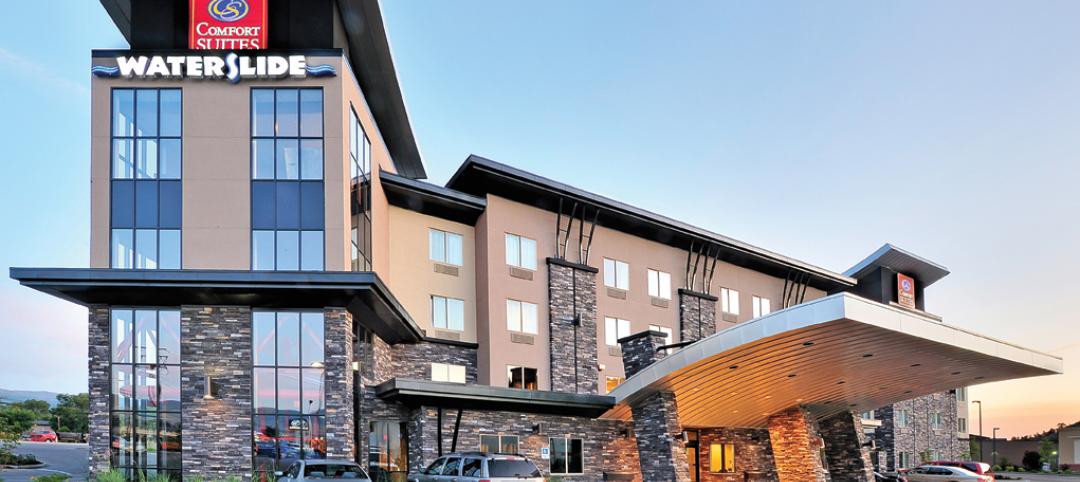In response to manufacturer demand, the Health Product Declaration Collaborative, together with GreenCE, GreenCircle, NSF International, PE International, SCS Global Services, ToxServices LLC, and UL Environment, is developing an official protocol for third party verification of HPDs. A similar process is underway to define expectations for quality assurance consulting.
The Health Product DeclarationTM (HPDTM) offers a framework for manufacturers to list product ingredients and associated health information. It also provides a context towards a better understanding of the variables in existing inventory systems.
“Establishing common criteria for third party verification and quality assurance consulting is critical to advance the collective knowledge of the building industry, particularly as questions move up the supply chain,” said Eden Brukman, Technical Director of the HPD Collaborative. “For these services to be successful, consistency is key.”
Alpar Architectural Products LLC, ASSA ABLOY Door Security Solutions, Bradley Corporation, Cosentino Group, Forbo Flooring Systems, GAF, Interface, Mohawk Group, Nydree Flooring, PROSOCO, and Teknion are already working with one or more of the provisional third party verifiers and quality assurance consultants so that, when released in Spring 2014, the official protocols will be based on functional experience and the best standard of practice. This initial discovery phase of documenting the necessary methodology, credentials, and training will run through February 2014. Additional manufacturers are also encouraged to participate.
“Decision makers are looking for more information than ever before about the products they specify, and we know that they see value in that information being backed by third-party substantiation,” said Sara Greenstein, President, UL Environment. “UL Environment is proud to participate in this pilot with the HPD Collaborative to ensure quality and consistency in the verification process, and to offer manufacturers a way to meet new market demands for third-party verified Health Product Declarations.”
“Creating a third-party review process for HPDs is a necessary step in providing accurate material content data, and GreenCircle is proud to be at the forefront of this movement,” said Tad Radzinski, Certification Officer.
Dr. Margaret Whittaker, Managing Director and Chief Toxicologist of ToxServices LLC added: “The HPD is a valuable tool for all levels of the supply chain and an important first step in a manufacturer’s commitment to product sustainability. ToxServices is pleased to help product manufacturers complete their HPDs and to provide confidential third-party services that facilitate the reporting of proprietary formulation information.”
"The HPD is a much needed step forward for the construction industry,” said Tara Blank, Ph.D. of Elixir Environmental. “GreenCE and Elixir Environmental are excited to be involved in the pilot program for development of a third party verification system for The HPD, which we expect will act to further increase transparency and accountability of building products."
Teresa McGrath, Supervising Toxicologist for NSF Green Chemistry Programs agreed, “HPDs are an important addition to the expanding portfolio of product information. Along with environmental product declarations (EPDs) and multi-attribute sustainability standards, HPDs will allow specifiers, buyers, and end users to get a standardized set of third-party verified, transparent data and information about the materials and any potential hazards associated with ingredients in building products. NSF is committed to helping the business products industry meet the HPD requirements and providing third-party validation services.”
“Transparency and disclosure are now market requirements. Providing software solutions and technical support for the development of protocols and various types of product declarations and public reports is the core of our business, and has been for 20 years,” said Heather Gadonniex, Business Development Director, PE INTERNATIONAL. “We are pleased to lend our collective expertise to drive continuous improvement of the HPD standard and ensure our clients’ interests are represented throughout the process.”
“SCS Global Services is committed to the continual improvement of the HPD process to ensure the highest level of chemical transparency and disclosure,” said Stowe Beam, Managing Director of Environmental Certification Services. “As a trusted leader in environmental certification, we are pleased to offer third-party verification of HPDs and inform the HBD Collaborative pilot to develop a standardized verification system.”
About Health Product Declaration Collaborative
The Health Product Declaration Collaborative is a customer-led organization committed to the continuous improvement of the building industry’s performance through openness and innovation in the product supply chain. The HPD Collaborative created and supports the Health Product Declaration (HPD), an objective tool for the accurate reporting of product contents and how each ingredient relates to the bigger picture for ecological health. The HPD helps us impartially define the critical information needed by manufacturers, suppliers, building designers, specifiers, owners, and users. It is freely available at www.hpdcollaborative.org.
Related Stories
| Jan 4, 2011
6 green building trends to watch in 2011
According to a report by New York-based JWT Intelligence, there are six key green building trends to watch in 2011, including: 3D printing, biomimicry, and more transparent and accurate green claims.
| Dec 17, 2010
Gemstone-inspired design earns India’s first LEED Gold for a hotel
The Park Hotel Hyderabad in Hyderabad, India, was designed by Skidmore, Owings & Merrill to combine inspirations from the region’s jewelry-making traditions with sustainable elements.
| Dec 17, 2010
Subway entrance designed to exude Hollywood charm
The Hollywood/Vine Metro portal and public plaza in Los Angeles provides an entrance to the Red Line subway and the W Hollywood Hotel. Local architect Rios Clementi Hale Studio designed the portal and plaza to flow with the landmark theaters and plazas that surround it.
| Dec 17, 2010
Cladding Do’s and Don’ts
A veteran structural engineer offers expert advice on how to avoid problems with stone cladding and glass/aluminum cladding systems.
| Dec 7, 2010
USGBC: Wood-certification benchmarks fail to pass
The proposed Forest Certification Benchmark to determine when wood-certification groups would have their certification qualify for points in the LEED rating systemdid not pass the USGBC member ballot. As a result, the Certified Wood credit in LEED will remain as it is currently written. To date, only wood certified by the Forest Stewardship Council qualifies for a point in the LEED, while other organizations, such as the Sustainable Forestry Initiative, the Canadian Standards Association, and the American Tree Farm System, are excluded.
| Dec 7, 2010
Product of the Week: Petersen Aluminum’s column covers used in IBM’S new offices
IBM’s new offices at Dulles Station West in Herndon, Va., utilized Petersen’s PAC-1000 F Flush Series column covers. The columns are within the office’s Mobility Area, which is designed for a mobile workforce looking for quick in-and-out work space. The majority of workspaces in the office are unassigned and intended to be used on a temporary basis.
| Nov 11, 2010
Saint-Gobain to make $80 million investment in SAGE Electrochromics
Saint-Gobain, one of the world’s largest glass and construction material manufacturers, is making a strategic equity investment in SAGE Electrochromics to make electronically tintable “dynamic glass” an affordable, mass-market product, ushering in a new era of energy-saving buildings.
| Nov 11, 2010
Saint-Gobain to make $80 million investment in SAGE Electrochromics
Saint-Gobain, one of the world’s largest glass and construction material manufacturers, is making a strategic equity investment in SAGE Electrochromics to make electronically tintable “dynamic glass” an affordable, mass-market product, ushering in a new era of energy-saving buildings.
| Nov 5, 2010
New Millennium’s Gary Heasley on BIM, LEED, and the nonresidential market
Gary Heasley, president of New Millennium Building Systems, Fort Wayne, Ind., and EVP of its parent company, Steel Dynamics, Inc., tells BD+C’s Robert Cassidy about the Steel Joist Manufacturer’s westward expansion, its push to create BIM tools for its products, LEED, and the outlook for the nonresidential construction market.
| Nov 3, 2010
Sailing center sets course for energy efficiency, sustainability
The Milwaukee (Wis.) Community Sailing Center’s new facility on Lake Michigan counts a geothermal heating and cooling system among its sustainable features. The facility was designed for the nonprofit instructional sailing organization with energy efficiency and low operating costs in mind.













